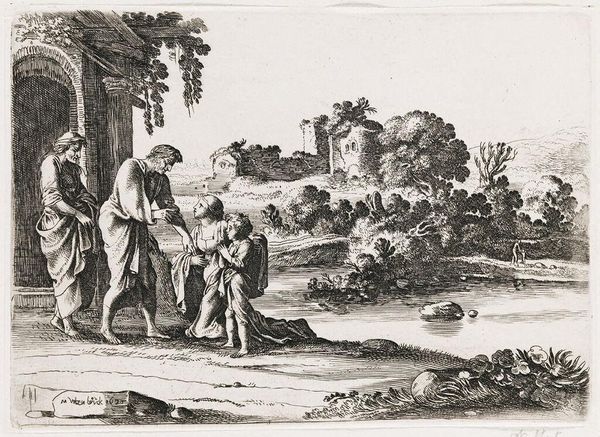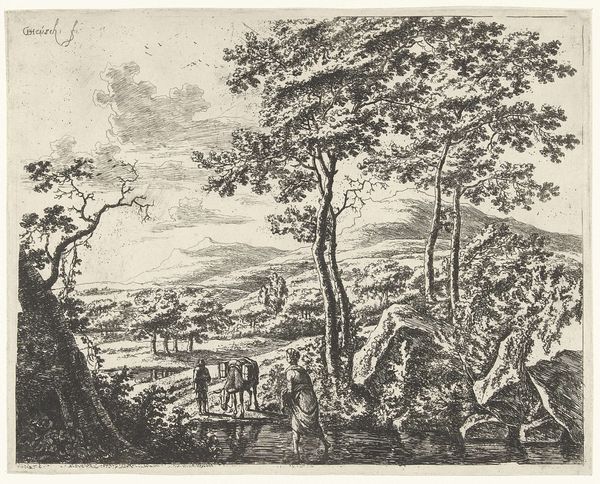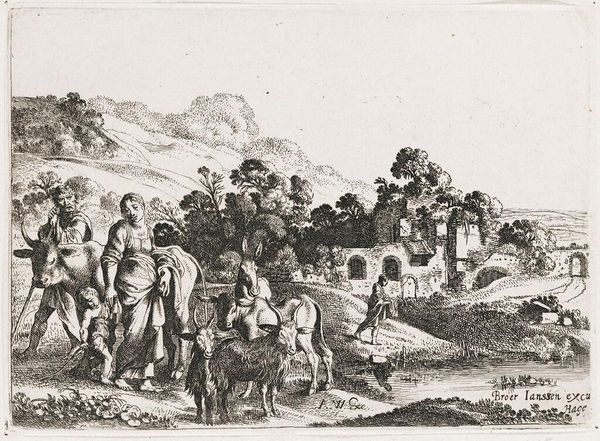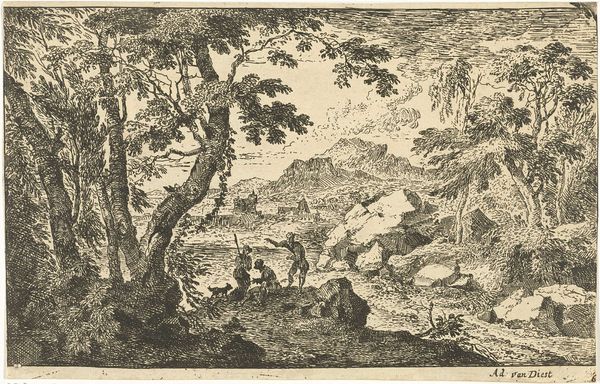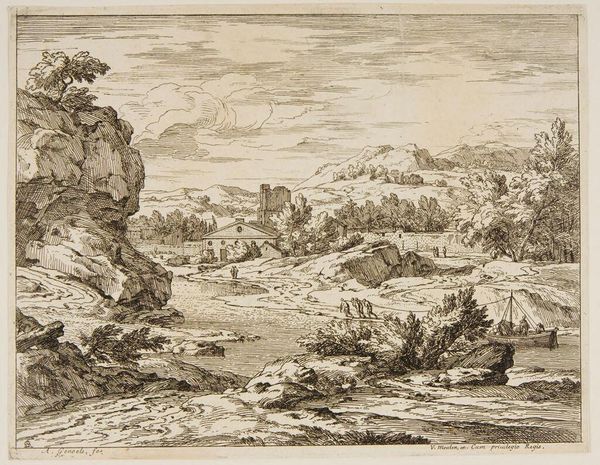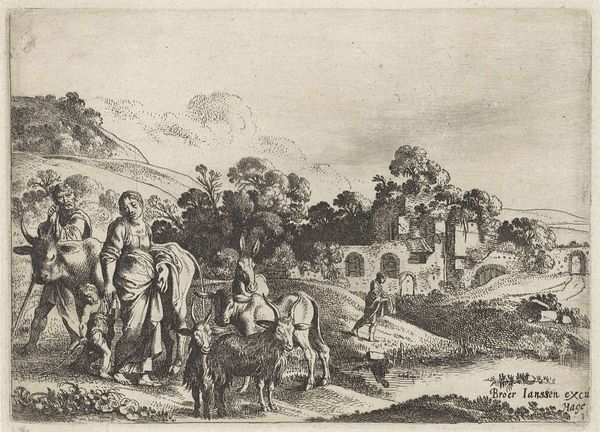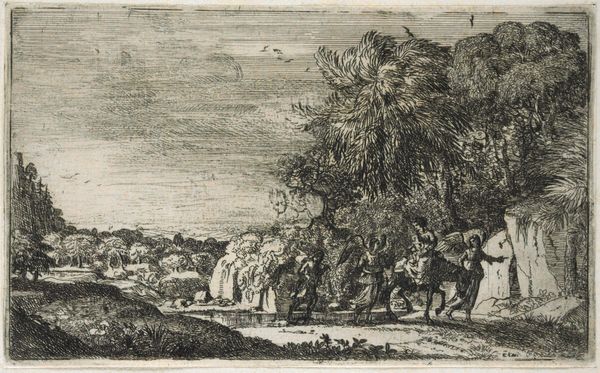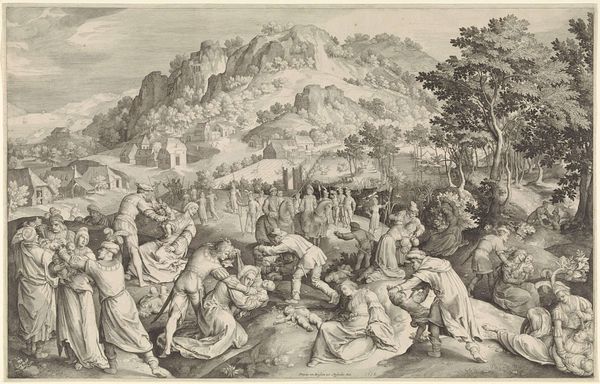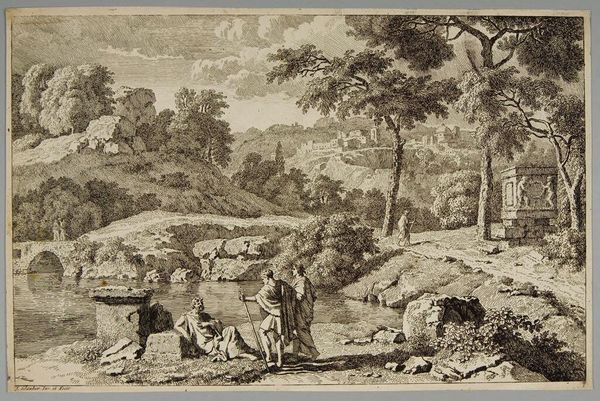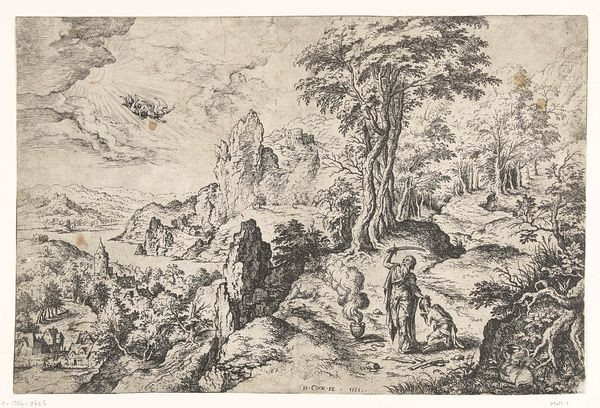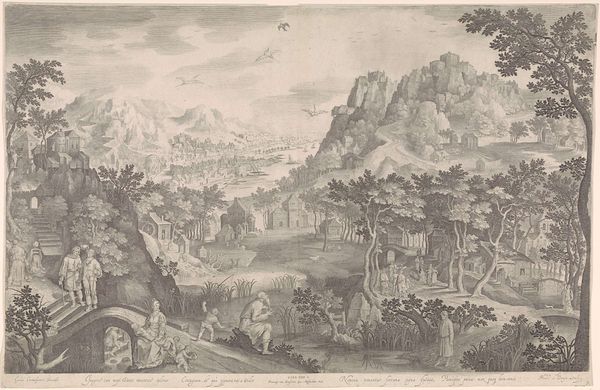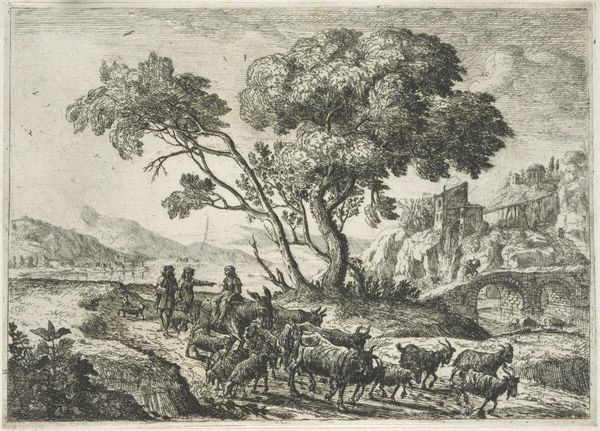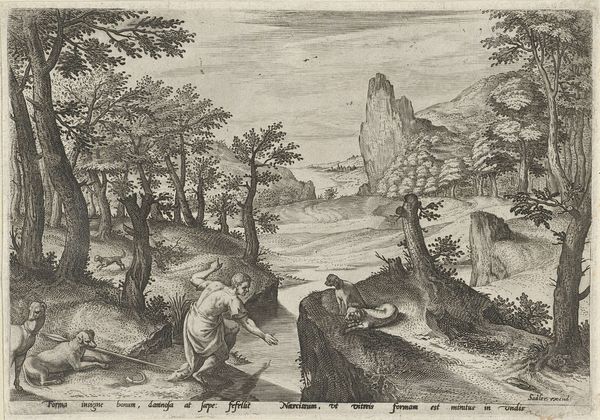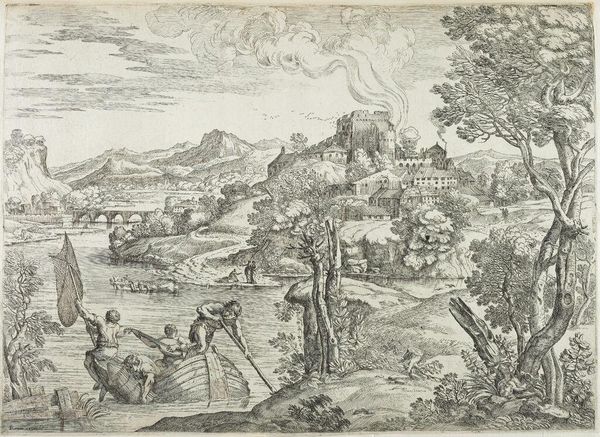
Haymaking (June and July) 1565
0:00
0:00
pieterbruegeltheelder
Lobkowicz Palace, Prague Castle, Prague, Czech Republic
painting, oil-paint
#
narrative-art
#
painting
#
oil-paint
#
landscape
#
perspective
#
mannerism
#
figuration
#
oil painting
#
genre-painting
#
northern-renaissance
#
realism
Dimensions: 161 x 117 cm
Copyright: Public domain
Curator: What strikes me immediately about this piece is its vibrant depiction of labor, and how it portrays collective effort with such dynamism. It seems to encapsulate a specific socio-economic experience. Editor: You’re responding to the figures; for me, it’s all about that sweeping landscape. This is Pieter Bruegel the Elder’s "Haymaking", painted in 1565, part of his series depicting the months. It’s an oil painting showcasing a rural scene during the height of summer. Curator: And we should definitely look closer at the composition – there’s so much to unpack in the positioning of these individuals within a rigidly stratified feudal order! The figures literally merge with the landscape itself. Editor: I think it also illustrates a changing perception of nature and humanity's place within it. We see the receding landscape, meticulously rendered with atmospheric perspective, guiding our eye into the distance. It speaks to a developing scientific and humanistic outlook. Curator: But let's not lose sight of the individuals depicted within the canvas! Who is this labor really benefiting? And to what extent does their representation reinforce societal power dynamics? Consider also the burdens the harvesters bear. Editor: While you are not wrong, I do see elements of idealization alongside realism. This painting does participate in constructing a visual narrative around rural life, doesn’t it? One that was particularly appealing to his aristocratic patrons. Curator: But could Bruegel be subtly critiquing the idealized image? Are these figures perhaps a form of commentary on the inherent inequality woven into agrarian society? This painting invites critical discourse about societal expectations. Editor: That's an interesting approach. It would certainly align with other pieces of the artist. Either way, Bruegel masterfully balances detail with broader compositional concerns, resulting in a powerful meditation on humanity's relationship to the land. Curator: Absolutely. The painting’s impact transcends a simple representation of haymaking. It evokes wider discussions on our connections with labor, environment, and the sociopolitical structures of the era. Editor: Indeed. Bruegel’s “Haymaking” remains incredibly relevant for understanding 16th-century life as well as prompting contemporary discussions on socio-ecological questions.
Comments
No comments
Be the first to comment and join the conversation on the ultimate creative platform.
